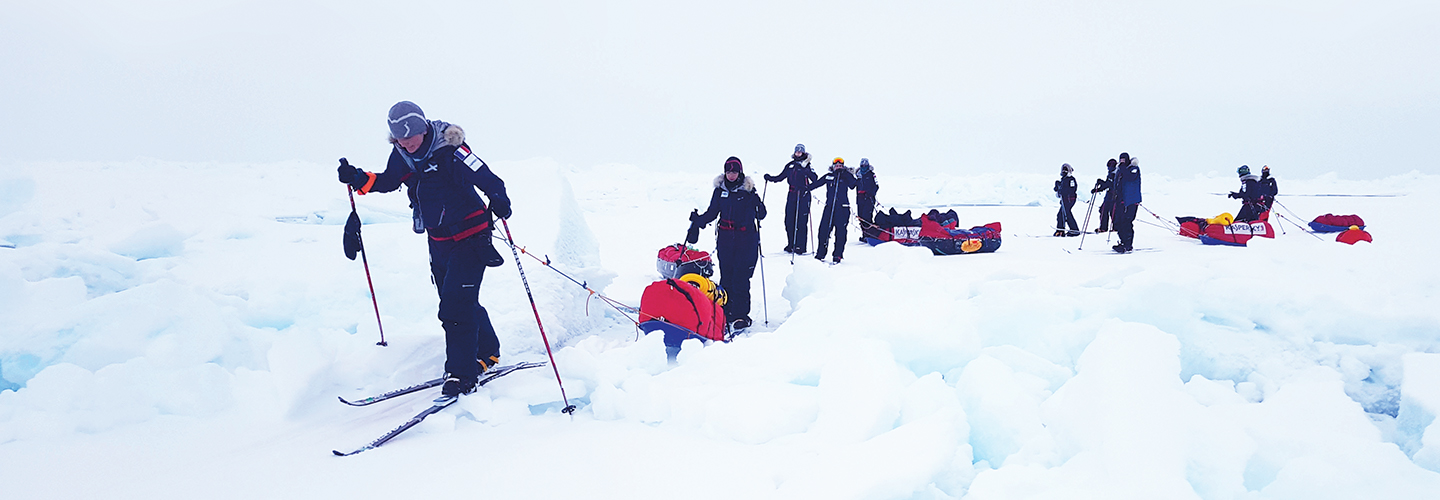Jim McMahon/Mapman
For six hours, Felicity Aston and her team hunted for a way to cross a giant wall of ice. The 20-foot-tall ridge stood between them and the North Pole, the northernmost point on the planet. There was no end in sight. So they had to go over it.
The team worked together to get their skis, their 90-pound sleds, and themselves over the ice wall. When they reached the other side, “it was this moment of real euphoria,” says Aston.
Aston was the leader of the Women’s Euro-Arabian North Pole Expedition. She handpicked 10 women from countries across Europe and the Arabic world. Their mission: to ski 70 miles over ocean ice to reach the North Pole.
Felicity Aston and her team had a problem. They needed to get across a giant wall of ice. The ridge stood between them and the North Pole, the northernmost point on the planet. For six hours, they hunted for a way around the 20-foot wall. But there was no end in sight. So they had to go over it.
The team worked together to get over the ice wall. They had to haul their skis and their 90-pound sleds along too. Finally, they reached the other side. “It was this moment of real euphoria,” or joy, says Aston.
Aston was the leader of the Women’s Euro-Arabian North Pole Expedition. She selected 10 women to join her. They came from countries across Europe and the Arabic world. Their mission: to ski 70 miles over ocean ice. Their goal: to reach the North Pole.

